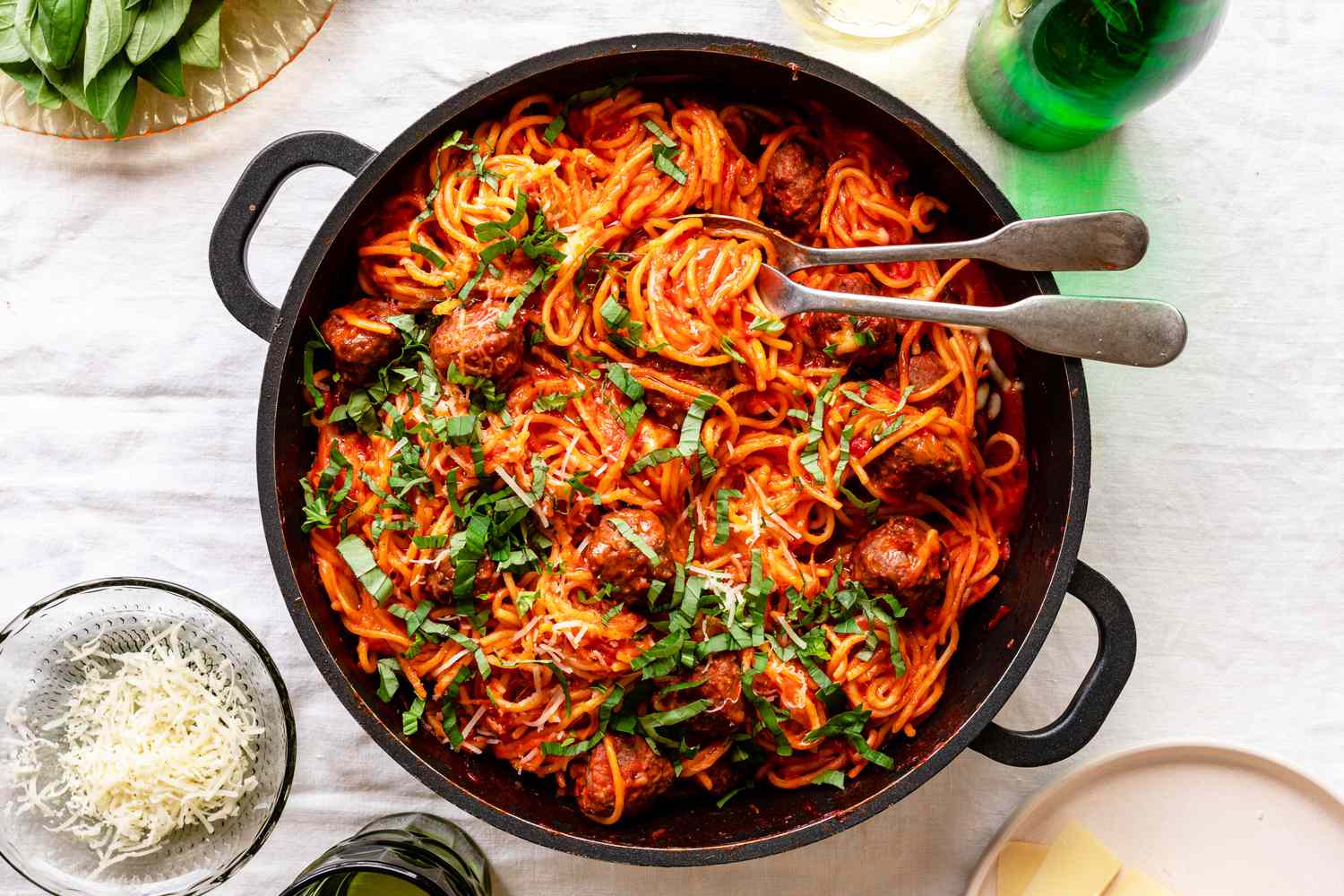

Articles
How To Cook Pasta In Electric Skillet
Modified: August 24, 2024
Learn how to cook pasta in an electric skillet with these helpful articles. Discover new techniques and delicious recipes for perfect pasta dishes.
(Many of the links in this article redirect to a specific reviewed product. Your purchase of these products through affiliate links helps to generate commission for Storables.com, at no extra cost. Learn more)
Introduction
When it comes to cooking pasta, many home chefs default to using a pot on the stovetop. However, there is another versatile and convenient option: cooking pasta in an electric skillet. An electric skillet offers a range of benefits and can quickly become your go-to tool for whipping up delicious pasta dishes.
In this article, we will explore the advantages of using an electric skillet to cook pasta, help you choose the right skillet for your needs, guide you through the steps of cooking pasta in an electric skillet, and provide some tips and tricks for achieving perfectly cooked pasta each time.
By the end of this article, you’ll have all the knowledge you need to confidently prepare your favorite pasta dishes in an electric skillet, saving you time and effort in the kitchen.
So, let’s dive in and discover the wonders of cooking pasta in an electric skillet!
Key Takeaways:
- Elevate your pasta game by using an electric skillet for even heating, precise temperature control, and convenient cooking. Enjoy time efficiency and space-saving benefits while creating delicious pasta dishes.
- Choose the right electric skillet, prepare it for cooking, and follow step-by-step instructions to achieve perfectly cooked pasta. Experiment with sauces, ingredients, and cleaning tips to enhance your pasta cooking experience.
Read more: How To Cook On Electric Skillet
Benefits of Using an Electric Skillet to Cook Pasta
Using an electric skillet to cook pasta brings several advantages over traditional stovetop methods. Here are some key benefits to consider:
- Even and Consistent Heating: Electric skillets provide uniform heat distribution, ensuring that your pasta cooks evenly. This eliminates the risk of overcooked or undercooked pasta, resulting in perfectly al dente noodles every time.
- Precise Temperature Control: Most electric skillets come with precise temperature control settings, allowing you to set the exact temperature required for cooking pasta. This eliminates the need for constant monitoring and adjustment, giving you more control over the cooking process.
- Versatility: Electric skillets offer versatility beyond just cooking pasta. You can use them to sauté vegetables, simmer sauces, or even fry meatballs to accompany your pasta dish. It’s like having a multifunctional cooking tool right on your countertop.
- Convenience: Cooking pasta in an electric skillet is incredibly convenient. With a non-stick surface, you can easily stir and toss the pasta without worrying about it sticking to the bottom of the skillet. Additionally, most electric skillets have a removable temperature control unit, making cleanup a breeze.
- Time Efficiency: Electric skillets heat up quickly, reducing the time it takes to bring the water to a boil. This means you can start cooking your pasta faster, saving valuable time in the kitchen.
- Space-saving: If you have limited stovetop space, using an electric skillet provides a convenient alternative. It eliminates the need for a large pot and allows you to free up space for other cooking tasks.
These benefits make using an electric skillet to cook pasta a practical and efficient choice for any home cook. Whether you’re a beginner or an experienced chef, an electric skillet can enhance your pasta cooking experience with its convenience and versatility.
Now, let’s move on to choosing the right electric skillet for cooking pasta.
Choosing the Right Electric Skillet for Cooking Pasta
When it comes to choosing an electric skillet for cooking pasta, you’ll want to consider a few key factors to ensure you find the perfect fit for your needs:
- Size and Capacity: Electric skillets come in various sizes, so it’s important to consider the amount of pasta you typically cook. If you’re cooking for a large family or frequently entertain guests, opt for a skillet with a larger capacity. For smaller households, a smaller skillet may suffice.
- Temperature Control: Look for an electric skillet with a precise temperature control feature. This will allow you to set the desired cooking temperature and maintain it throughout the cooking process, ensuring optimal pasta texture and doneness.
- Nonstick Surface: A nonstick surface is essential when cooking pasta in an electric skillet. It prevents the noodles from sticking to the bottom and facilitates easy stirring and tossing. Ensure that the skillet’s nonstick coating is durable and easy to clean.
- Depth and Shape: Consider the depth and shape of the skillet. A deeper skillet will accommodate larger pasta shapes and prevent splattering. A square or rectangular skillet may be more suitable for cooking lasagna or other layered pasta dishes.
- Durability and Quality: Invest in a high-quality electric skillet that is built to last. Look for skillets made from durable materials like stainless steel or heavy-duty nonstick coatings. This ensures that your skillet will withstand regular use and provide consistent performance.
- Additional Features: Some electric skillets come with extra features like a glass lid for easy monitoring, a steam vent for releasing excess moisture, or a removable temperature control unit for convenient cleaning. Consider these additional features based on your preferences.
By considering these factors, you can find an electric skillet that meets your cooking needs and enhances your pasta cooking experience. Take your time to research and read customer reviews to make an informed decision.
Now that you’ve chosen the right electric skillet, let’s move on to preparing it for cooking pasta.
Preparing the Electric Skillet for Cooking Pasta
Before you start cooking pasta in your electric skillet, it’s important to properly prepare the skillet to ensure optimal cooking results. Follow these steps to get your skillet ready:
- Wash and Dry: Start by thoroughly washing the electric skillet with warm, soapy water. Rinse it well and dry it completely with a clean towel. This removes any dust or residue that may have accumulated during storage.
- Season the Skillet: If your electric skillet requires seasoning, follow the manufacturer’s instructions to season the skillet’s cooking surface. Seasoning prevents food from sticking and helps develop a natural nonstick layer over time.
- Place the Skillet on a Heat-resistant Surface: Find a stable, heat-resistant surface for your electric skillet. Avoid placing it on a sensitive countertop that may be damaged by the heat. Make sure there is enough space around the skillet for ventilation.
- Attach the Temperature Control Unit: If your electric skillet has a removable temperature control unit, securely attach it to the skillet according to the manufacturer’s instructions.
- Preheat the Skillet: Turn on the electric skillet and preheat it to the desired cooking temperature. This step ensures that the skillet is heated evenly before adding the ingredients.
- Oil the Skillet (if necessary): Depending on the recipe, you may need to lightly oil the cooking surface of the skillet to prevent sticking. Use a heat-resistant cooking oil and spread it evenly across the surface with a brush or paper towel.
- Check the Temperature: Use a kitchen thermometer to verify that the skillet has reached the desired cooking temperature. This ensures that the pasta will cook properly and prevents under or overcooking.
By properly preparing your electric skillet, you create an ideal cooking environment for your pasta. Now that your skillet is ready, let’s move on to the ingredients and tools required for cooking pasta in an electric skillet.
Ingredients and Tools Required for Cooking Pasta in an Electric Skillet
Before you start cooking pasta in your electric skillet, make sure you have all the necessary ingredients and tools at hand. Here’s a list of what you’ll need:
Read more: How To Broil Chicken In An Electric Skillet
Ingredients:
- Pasta of your choice (such as spaghetti, penne, or fettuccine)
- Water for boiling the pasta
- Salt, to season the cooking water
- Desired sauce or ingredients for your pasta dish (such as marinara sauce, pesto, vegetables, or meatballs)
- Grated cheese for topping (optional)
- Fresh herbs for garnish (optional)
Tools:
- Electric skillet with temperature control
- Kitchen tongs or a pasta fork for stirring and handling the pasta
- Measuring cup
- Kitchen timer or smartphone timer
- Colander or strainer for draining the cooked pasta
- Serving bowl or plate
Having these ingredients and tools ready will streamline the pasta cooking process and ensure that you have everything you need right at your fingertips.
Now that you’re equipped with the necessary ingredients and tools, let’s move on to the step-by-step instructions for cooking pasta in an electric skillet.
Step-by-Step Instructions for Cooking Pasta in an Electric Skillet
Follow these step-by-step instructions to cook pasta in your electric skillet:
- Prepare the Water: Fill the electric skillet with enough water to fully submerge the pasta. Add salt to the water and stir to dissolve. The general rule of thumb is to use 1 tablespoon of salt for every 4 quarts of water.
- Preheat the Skillet: Turn on the electric skillet and set it to the desired cooking temperature. If your skillet doesn’t have specific temperature settings, medium-high heat is usually sufficient. Allow the water to come to a gentle simmer.
- Add the Pasta: Once the water is simmering, carefully add the pasta to the skillet, stirring gently to prevent sticking. Make sure the pasta is fully submerged in the water.
- Cook the Pasta: Cook the pasta according to the instructions on the package, stirring occasionally to prevent clumping. Keep in mind that cooking times may vary depending on the type and thickness of the pasta. It’s always a good idea to start with the minimum recommended cooking time and adjust accordingly.
- Test for Doneness: To check if the pasta is cooked to your desired texture, take a piece and taste it. The pasta should be al dente, meaning it is cooked but still slightly firm to the bite.
- Drain the Pasta: Once the pasta is cooked to your liking, carefully remove the skillet from the heat source and place it on a heat-resistant surface. Using kitchen tongs or a pasta fork, transfer the cooked pasta to a colander or strainer to drain the water.
- Add Sauce and Toss: Return the empty skillet to the heat source and add your desired sauce or ingredients, such as marinara sauce or sautéed vegetables. Add the drained pasta back to the skillet and gently toss to evenly coat the pasta with the sauce and ingredients.
- Serve and Enjoy: Transfer the pasta to a serving bowl or plate, and if desired, sprinkle with grated cheese and fresh herbs for added flavor. Serve the delicious homemade pasta immediately and enjoy!
By following these simple steps, you can easily cook pasta in your electric skillet with excellent results. Remember to adjust cooking times and temperatures based on your personal preferences and the instructions provided on the pasta package.
Now, let’s move on to some tips and tricks for achieving perfectly cooked pasta in an electric skillet.
When cooking pasta in an electric skillet, make sure to use enough water to fully submerge the pasta and add a pinch of salt to enhance the flavor. Keep the temperature on medium-high and stir occasionally to prevent sticking.
Tips and Tricks for Perfectly Cooked Pasta in an Electric Skillet
To ensure that your pasta turns out perfectly cooked and delicious in your electric skillet, consider these helpful tips and tricks:
- Use an Appropriate Amount of Water: Make sure to use enough water in your electric skillet to fully submerge the pasta. This helps prevent the noodles from sticking together and ensures even cooking.
- Stir the Pasta Occasionally: Stir the pasta occasionally during the cooking process to prevent it from sticking to the bottom of the skillet. This will also help the pasta cook more evenly.
- Don’t Overcook the Pasta: Keep a close eye on the cooking time to avoid overcooking the pasta. Take small samples and test for doneness before draining the entire batch.
- Reserve Some Pasta Water: Before draining the pasta, reserve a small amount of the cooking water. This starchy water can be added to the sauce to help bind it with the pasta and create a smoother texture.
- Salt the Water: Adding salt to the cooking water is essential for enhancing the flavor of the pasta. Don’t be shy with the salt, as it will season the pasta from within.
- Experiment with Oil: Depending on your preference and the recipe, you can add a small amount of oil to the cooking water to help prevent the pasta from sticking together. However, be cautious when using oil, as it can also make the pasta slick and prevent the sauce from adhering to it.
- Sauce it Up: Consider making your own homemade sauce to accompany the cooked pasta. This allows you to control the flavors and create a personalized dish. If using a store-bought sauce, add a personal touch by adding extra herbs, spices, or garnishes.
- Taste and Adjust: Taste the pasta before serving and make any necessary adjustments to the seasoning. You can add more salt, herbs, or spices to enhance the flavor to your liking.
- Get Creative: Don’t be afraid to get creative with your pasta recipes! Add vegetables, proteins, or different types of pasta shapes to create unique and flavorful dishes.
By keeping these tips and tricks in mind, you’ll be well on your way to consistently making perfectly cooked pasta in your electric skillet. With practice, you’ll develop your own techniques and variations to suit your taste preferences.
Now that you’re armed with these valuable tips, let’s move on to learning about the cleaning and care of your electric skillet.
Read more: How To Fry Chicken In Electric Skillet
Cleaning and Care of the Electric Skillet
Proper cleaning and care of your electric skillet are crucial to maintain its longevity and performance. Follow these guidelines to ensure your skillet stays in top condition:
- Cool Down the Skillet: Once you’re done cooking, turn off the heat and allow the skillet to cool down completely before cleaning. This not only prevents accidental burns but also makes the cleaning process easier.
- Remove the Temperature Control Unit: If your electric skillet has a removable temperature control unit, detach it from the skillet before cleaning. Check the manufacturer’s instructions for proper removal.
- Wipe Clean: Use a damp cloth or sponge to wipe the interior and exterior of the skillet. If there are any stubborn food residues, use a soft brush or non-abrasive sponge to gently scrub them away.
- Avoid Submerging in Water: As electric skillets have electrical components, it’s important to avoid submerging the skillet in water. Instead, focus on spot cleaning and wiping the skillet to remove any grease or spills.
- Nonstick Surface Care: If your electric skillet has a nonstick surface, be gentle when cleaning to avoid scratching the coating. Avoid using abrasive cleaners or scrubbers that can damage the nonstick surface.
- Dry Thoroughly: After cleaning, ensure that the skillet is completely dry before storing it. Any moisture left behind can lead to rust or damage over time.
- Store Properly: Find a suitable place to store your electric skillet, preferably in a cool and dry area. Avoid stacking heavy objects on top of the skillet to prevent any potential damage.
- Regular Maintenance: To maintain the nonstick surface of your electric skillet, periodically apply a light coat of cooking oil and wipe away any excess with a paper towel. This helps to preserve the nonstick properties.
- Follow Manufacturer’s Instructions: Always refer to the specific cleaning and care instructions provided by the manufacturer of your electric skillet. They may have additional recommendations or precautions tailored to your specific model.
By following these cleaning and care guidelines, you can extend the lifespan of your electric skillet and ensure its optimal performance for years to come.
Now that you know how to properly clean and care for your electric skillet, let’s conclude our journey into the world of cooking pasta in an electric skillet.
Conclusion
Cooking pasta in an electric skillet offers numerous benefits, from even heating and precise temperature control to convenience and time efficiency. With the right electric skillet and the knowledge of how to properly cook pasta in it, you can elevate your pasta dishes to new heights.
In this article, we discussed the advantages of using an electric skillet for cooking pasta, the factors to consider when choosing the right skillet, and the steps for preparing the skillet and cooking pasta. We also provided tips and tricks for achieving perfectly cooked pasta and emphasized the importance of cleaning and caring for your electric skillet.
By exploring the possibilities of cooking pasta in an electric skillet, you can create delicious and flavorful meals for yourself, your family, and your friends. The versatility, convenience, and consistency of an electric skillet make it a valuable addition to any kitchen.
Remember to experiment with different pasta shapes, sauces, and ingredients to create your own signature pasta dishes. With practice, you’ll fine-tune your technique and develop a repertoire of delightful pasta recipes.
So, why not give it a try? Dust off your electric skillet and embark on a culinary adventure with pasta. Enjoy the convenience, savor the flavors, and impress your loved ones with your newfound pasta cooking skills!
Happy cooking!
Ready to expand your culinary prowess with your electric skillet? Dive into a variety of dishes you never thought possible in one versatile appliance. From searing meats to sautéing vegetables, mastering various electric skillet cooking methods opens up a world of delightful meals. And if you’re keen on integrating more veggies into your diet, why not start with carrots? Learn how to make carrots in an electric pressure cooker, ensuring they come out tender and flavorful every time. Both guides offer practical steps and insightful tips to enhance your cooking experience.
Frequently Asked Questions about How To Cook Pasta In Electric Skillet
Was this page helpful?
At Storables.com, we guarantee accurate and reliable information. Our content, validated by Expert Board Contributors, is crafted following stringent Editorial Policies. We're committed to providing you with well-researched, expert-backed insights for all your informational needs.

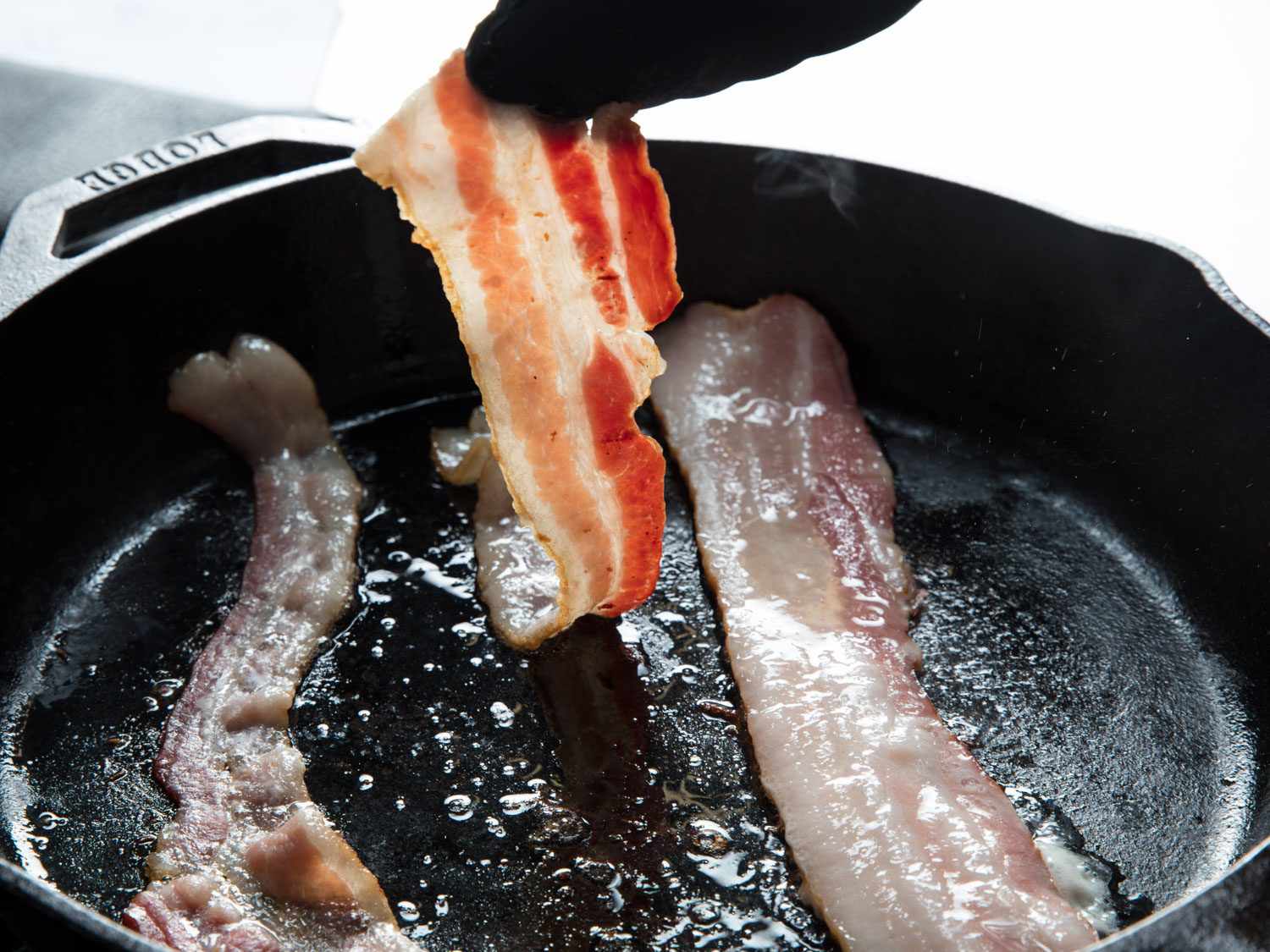
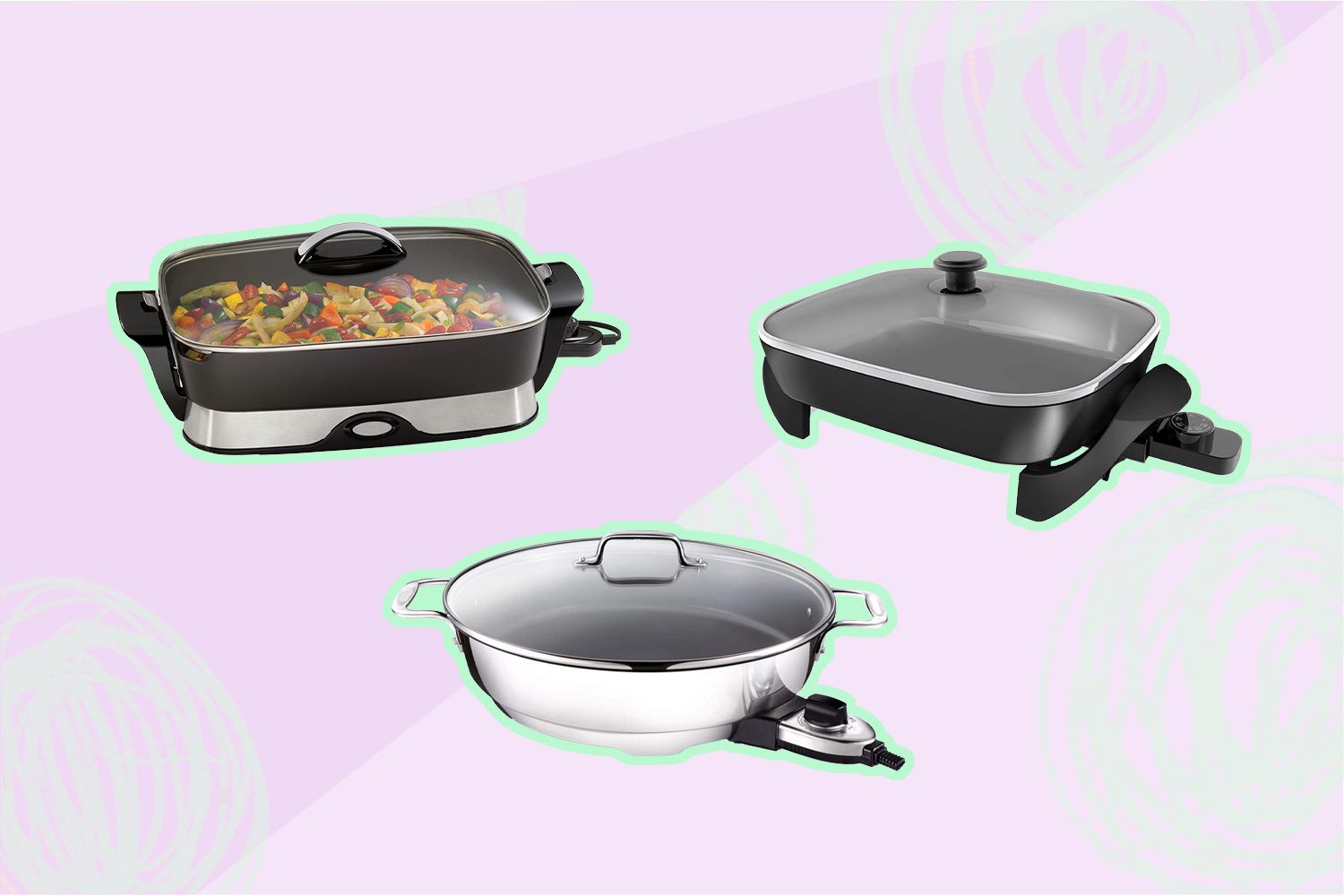
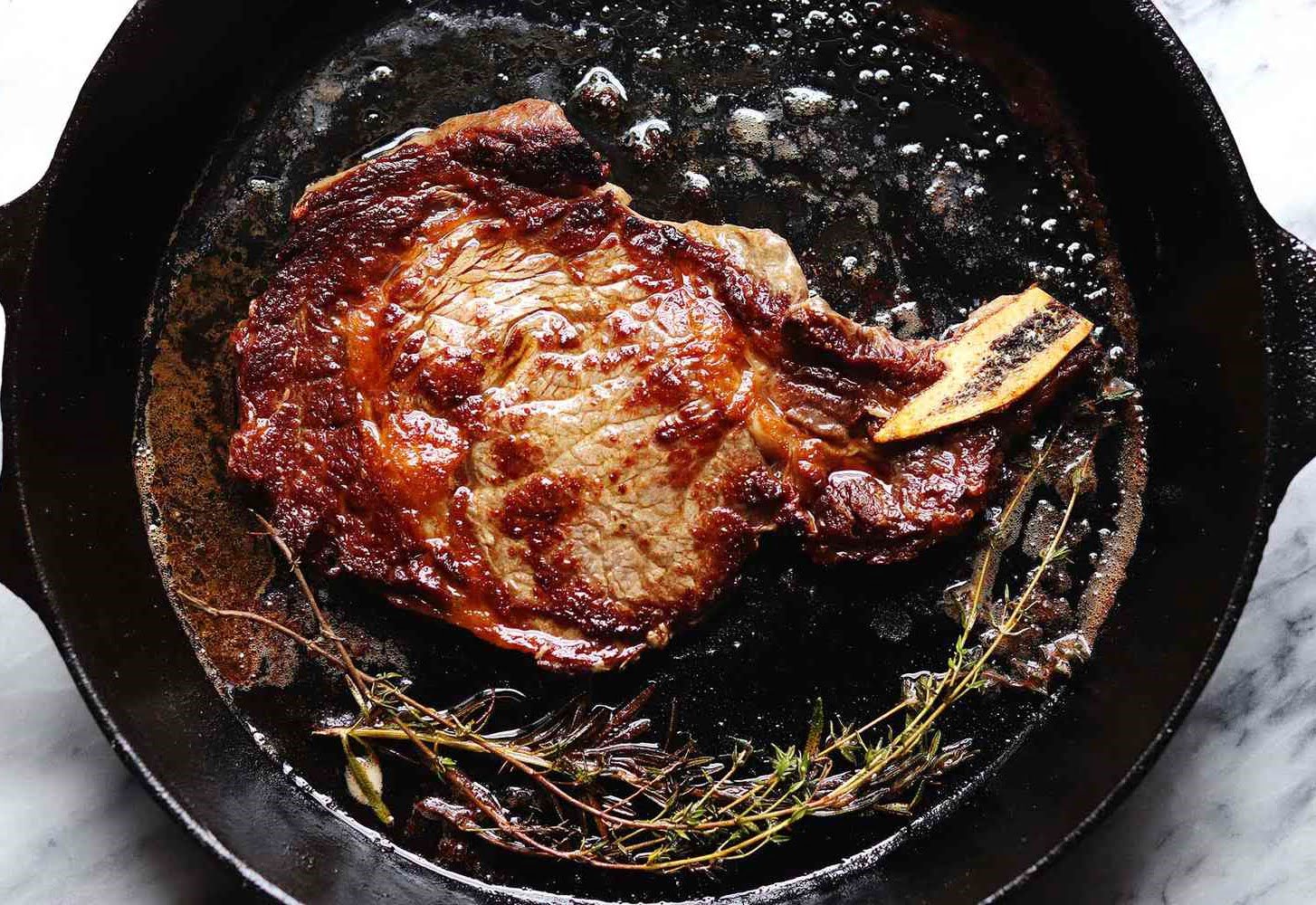
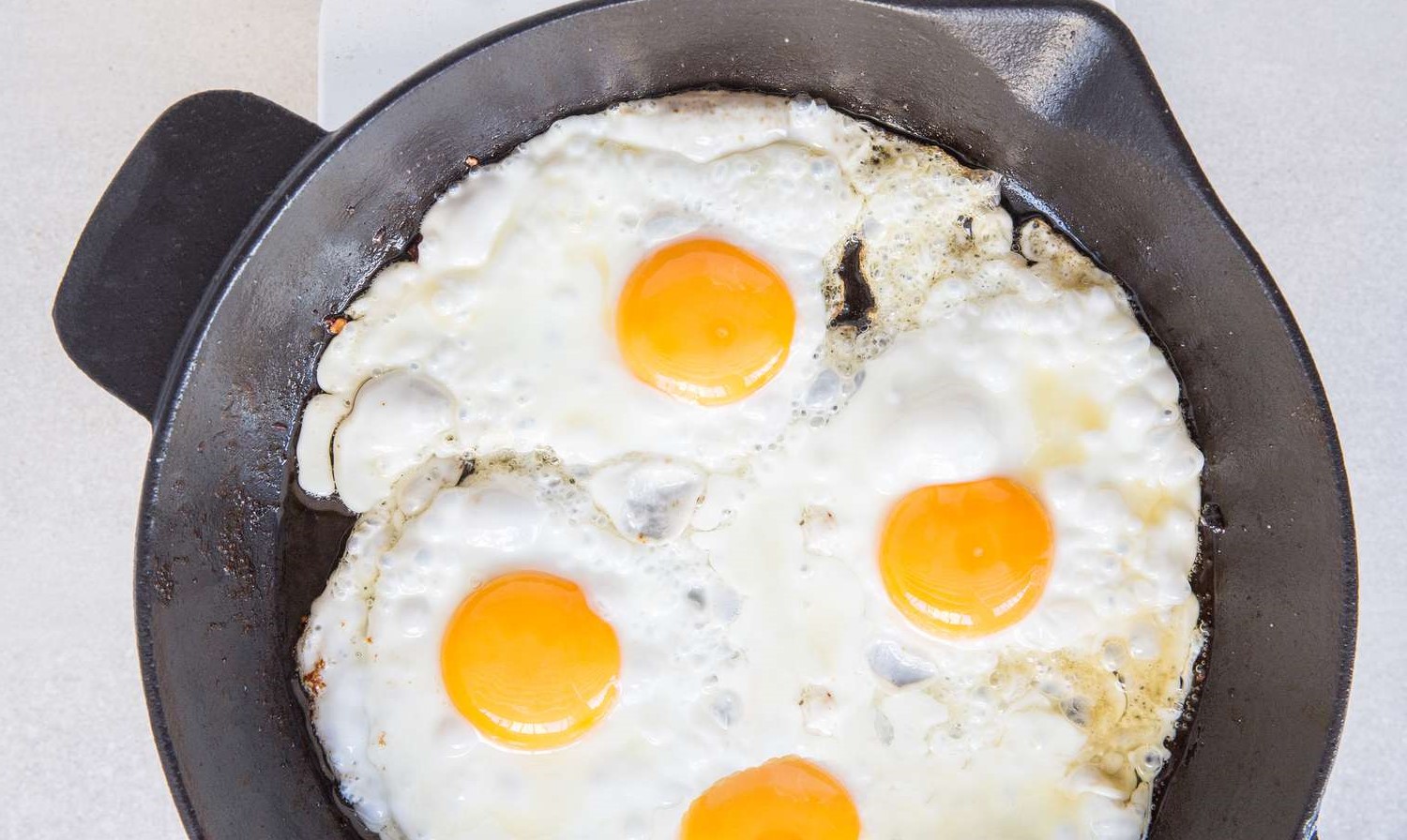
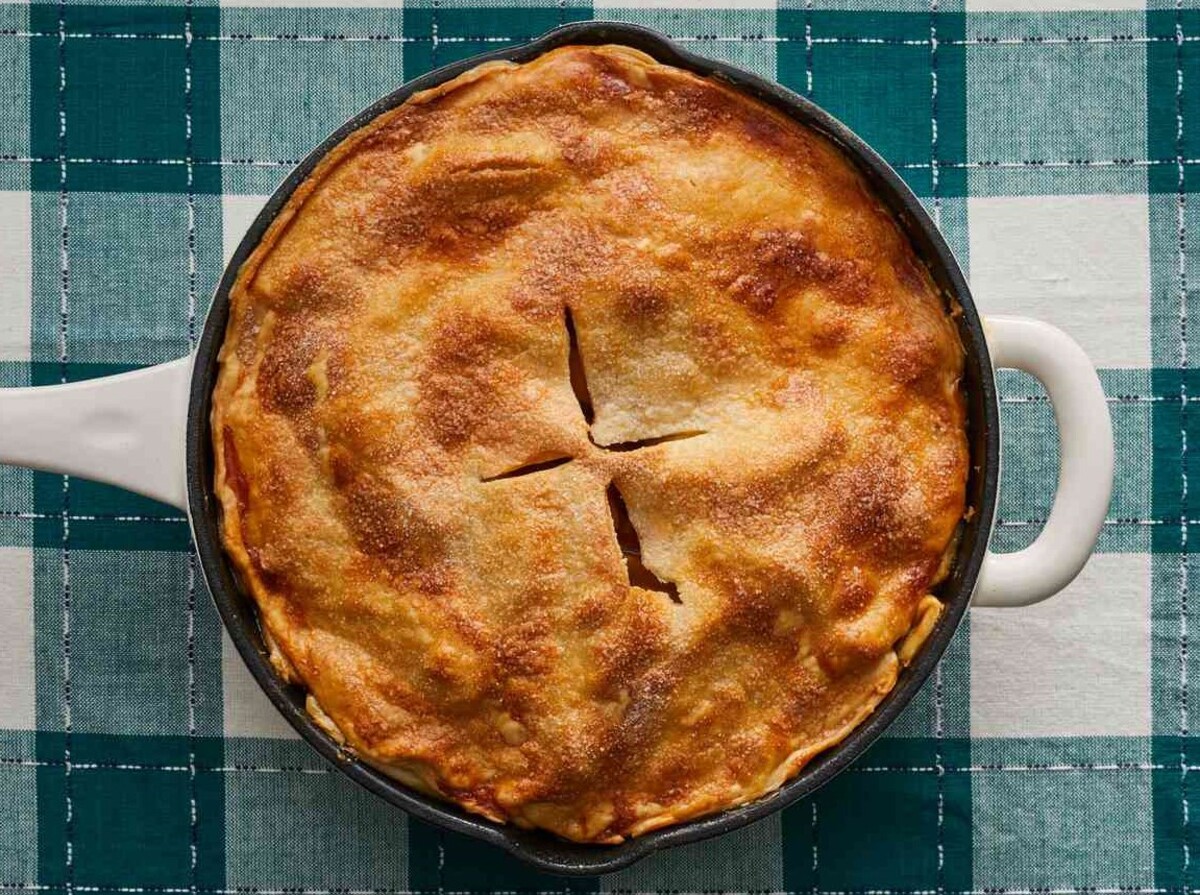
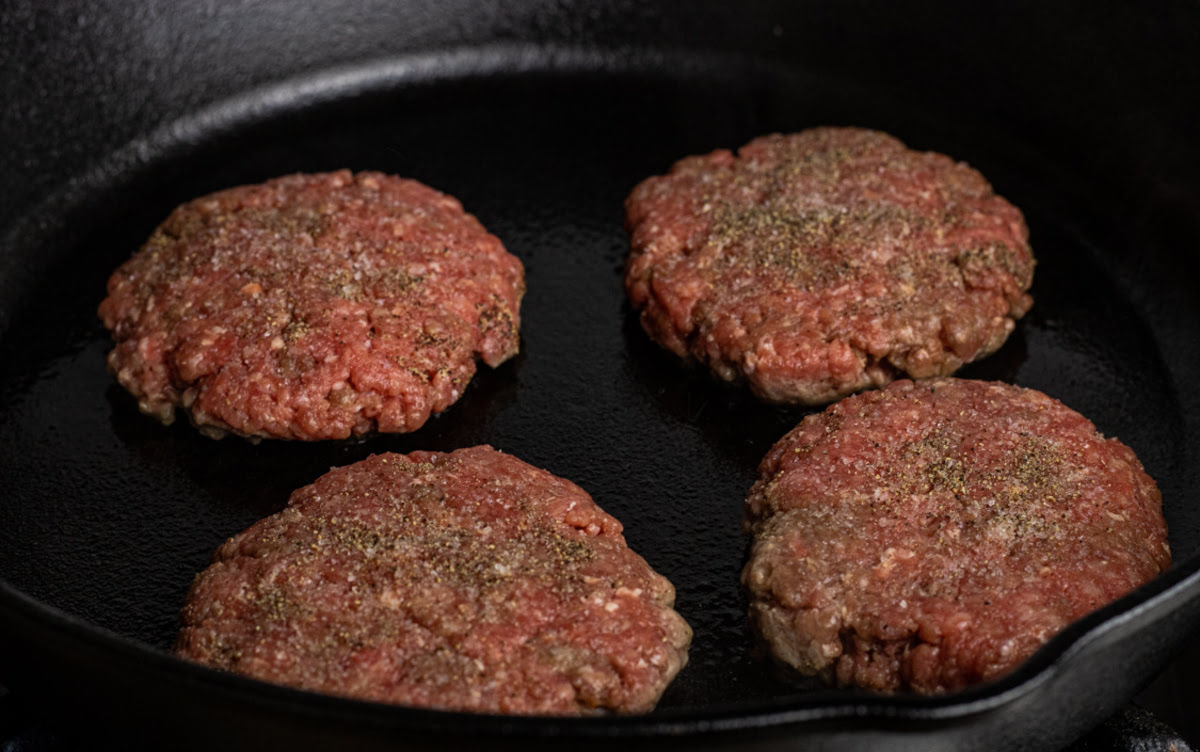
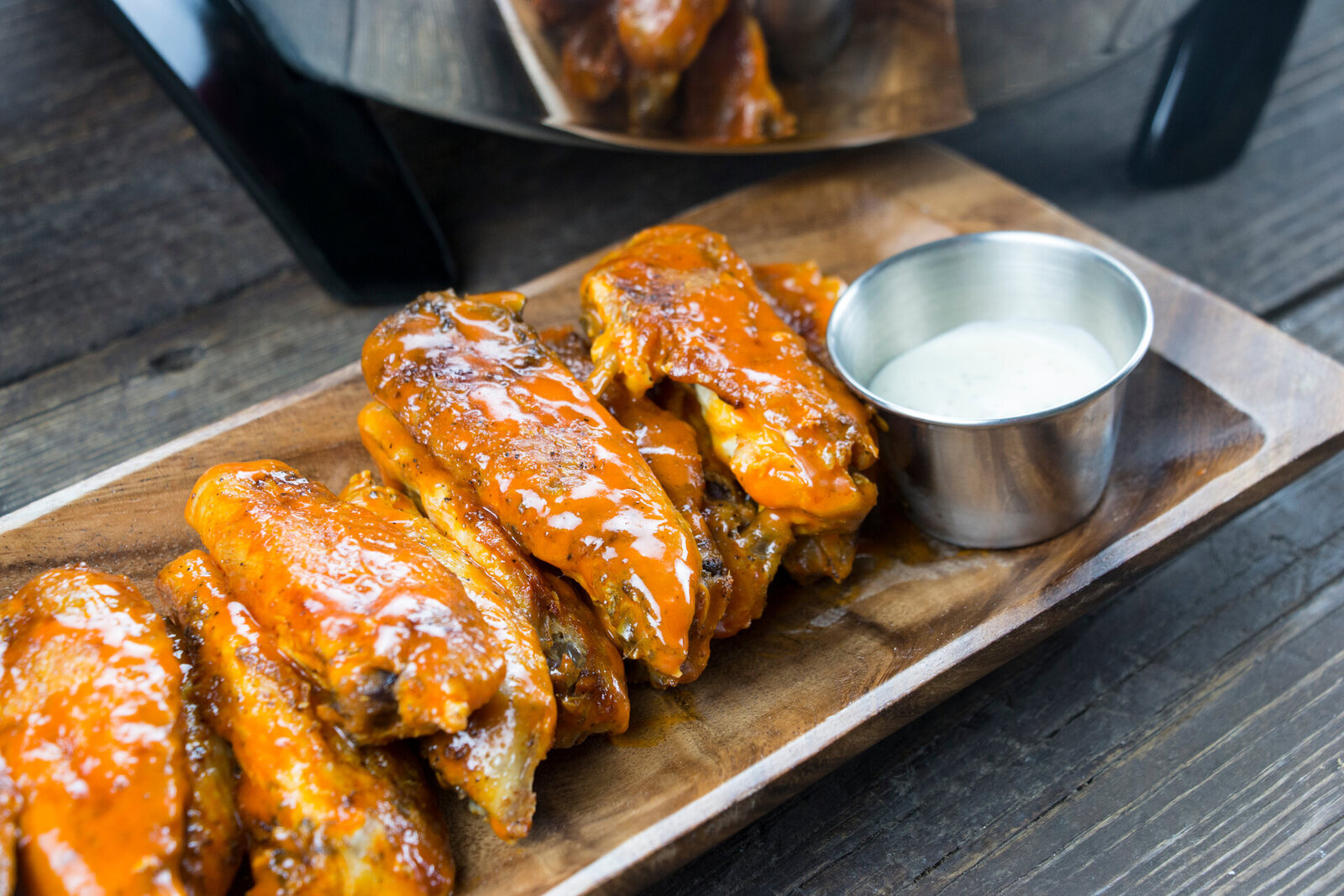
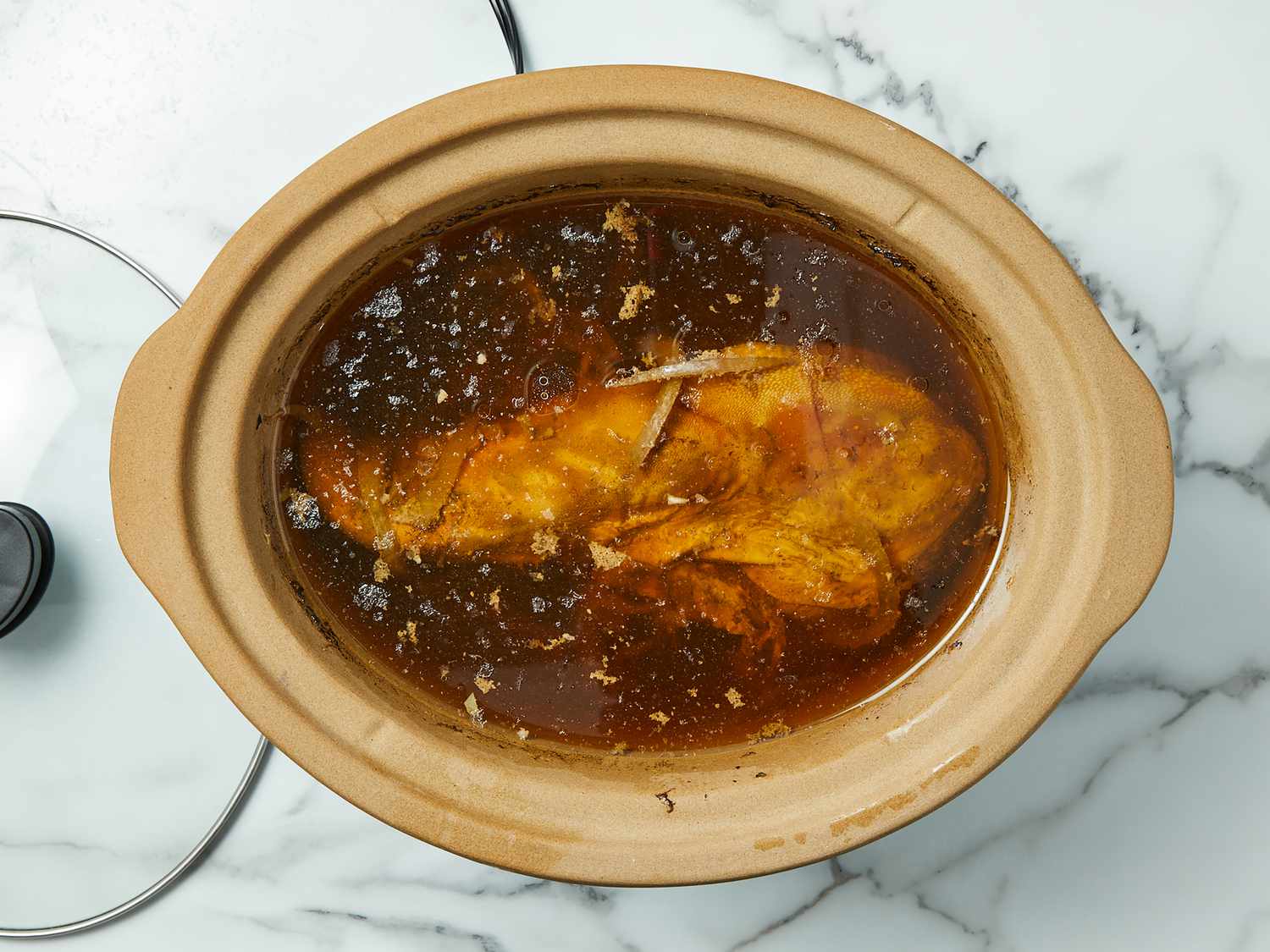
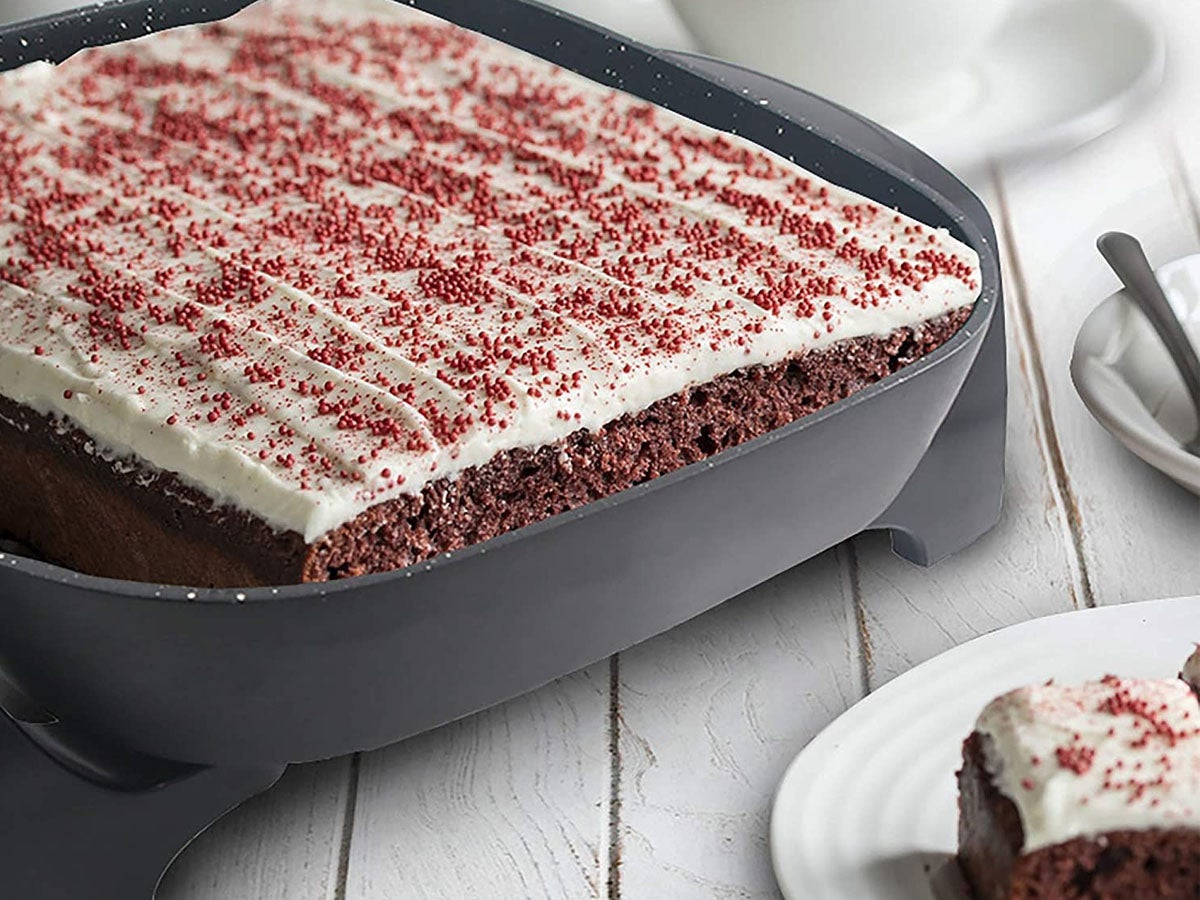

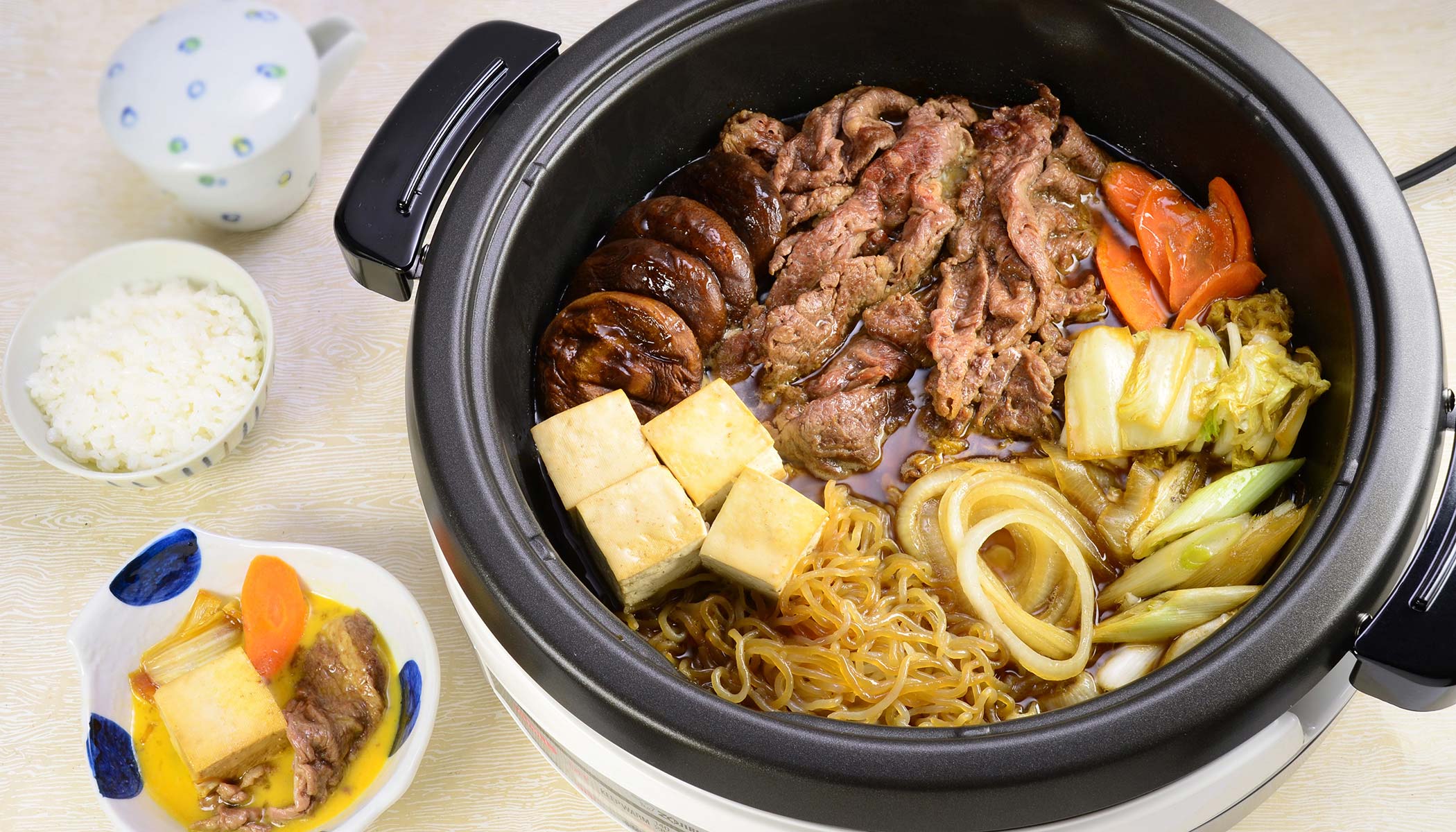
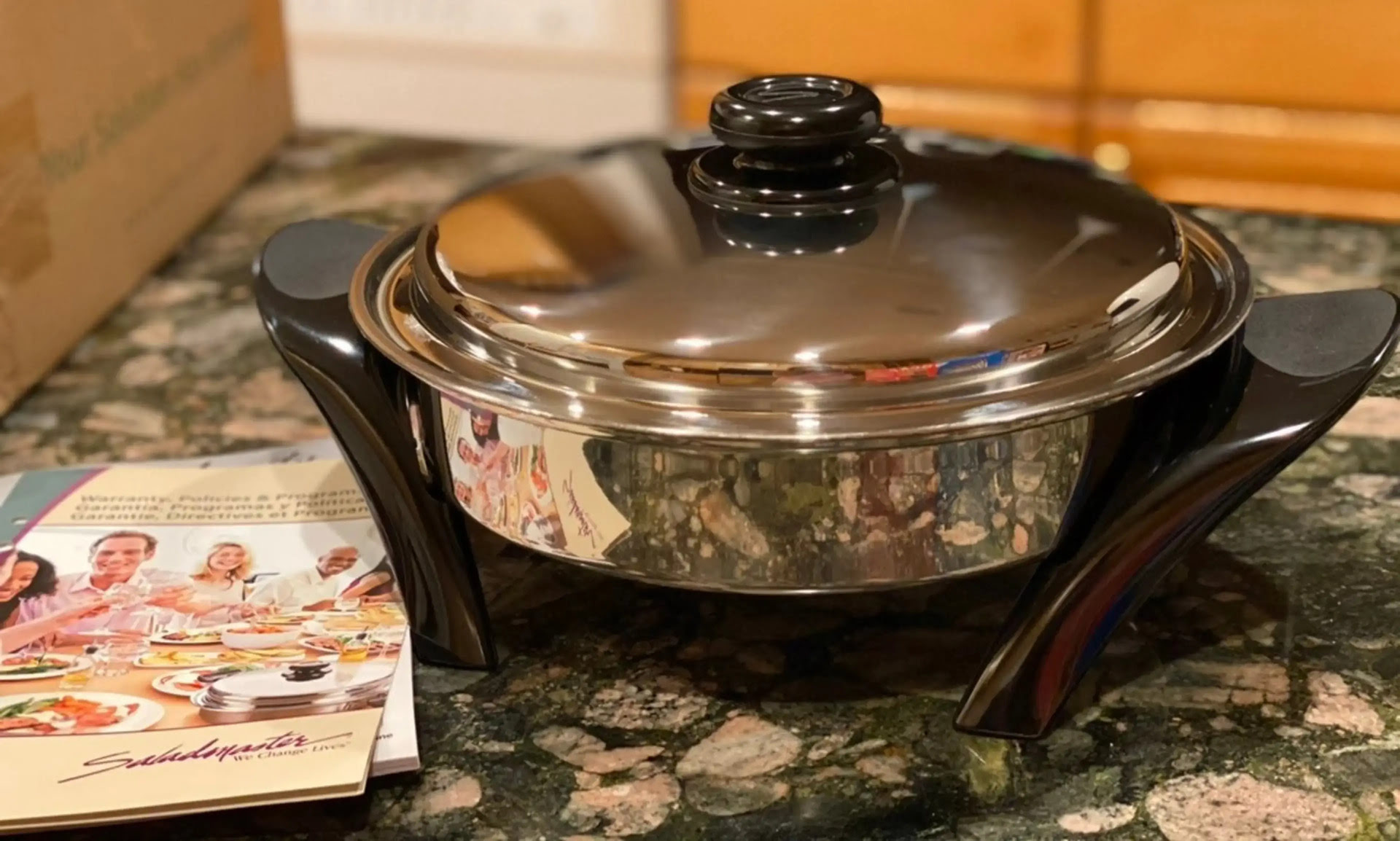

0 thoughts on “How To Cook Pasta In Electric Skillet”